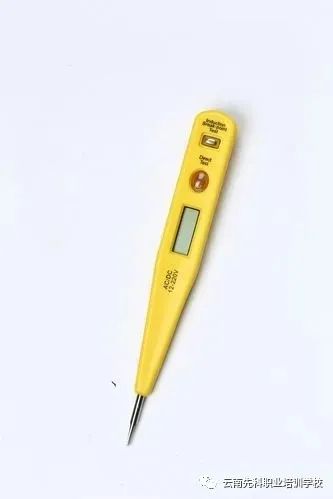A new colleague joined the company, graduated in mechatronics, fair-skinned, a bit tall and thin, looking quite energetic.
As an experienced electrician familiar with the environment and equipment at the unit, the leadership asked me to take him around for a few days to help him get acquainted.
Perhaps being new to the field, he was quite surprised when he saw my toolbox. Screws, screwdrivers, wrenches, pliers, hammers, sealing tape, lock cylinders, locks, and many other assorted items packed into one big bag. While working, he specifically asked me why one test pen was not enough and why I needed to carry three. If I already had a test pen, why also a multimeter?
As a plumber and electrician, to be honest, I don’t often deal with electricity directly; most of the work is miscellaneous. For example, fixing doors and windows, clearing drains, changing locks, and replacing faucets are common tasks. Sometimes we also handle landscaping, trimming branches, and repairing furniture, so I have a lot of miscellaneous items in my toolbox because you never know when you might need something.
However, maintaining and repairing electrical circuits and equipment is our main job, which is why I carry test pens and a multimeter with me at all times.

So why do I carry three test pens and a multimeter at the same time?
There are three common types of test pens: neon test pens, digital display test pens, and non-contact voltage testers.
1. Neon Test Pen
The neon test pen is a more traditional type. It determines whether a circuit or device is live based on whether the neon bulb lights up. Depending on the manufacturer, the measurement range of the test pen varies. Some light up above 50 volts, while others only light up above 110 volts. Therefore, we can only determine if a circuit or device is live but cannot accurately measure the voltage. The advantage of the neon test pen is that it is clearly visible in dim lighting, reducing the chance of misjudgment. Some are designed to resemble a thicker screwdriver and can easily interchange between Phillips and flat heads, making them quite convenient to use.

2. Digital Display Test Pen.
The digital display test pen features a fluorescent screen for readings. Compared to the neon test pen, it provides a numerical display during measurement, which is more intuitive, and many electricians prefer using it.
The downside of the digital display test pen is that it can be hard to read in low light, and the displayed numbers can vary widely. For example, if the voltage is 220 volts, it may show a range from 12 volts to 220 volts. However, if the voltage does not reach 220, the display may still show 220, but it’s not very clear, leading to potential misjudgment. Additionally, the design usually features smaller heads, which can be unusable in emergency repairs.

3. Non-contact Voltage Tester
This type of test pen has only become popular in recent years and features both sound and light alarms.
It is very useful for determining the live status of wires and circuits, especially for locating circuit breaks. It is unmatched by the other two types of test pens. Whether in daylight or darkness, as long as there is voltage, it will emit sound and light alarms. The downside is that it does not display voltage, so the technician only knows there is power but not the voltage level.
Because each of these three test pens has its strengths and weaknesses, I carry all three and use them according to different situations.

Also, because none of these three test pens can accurately measure the voltage of devices or circuits, I carry a multimeter with me.
As a maintenance electrician, we often use the voltage range, resistance range, and diode range (buzzing range, continuity range) of the multimeter. Unless dealing with high-precision circuit board repairs, I recommend electricians use clamp multimeters because they can directly measure current, which is both convenient and safe.
1. Voltage Range
As the name suggests, this is used to measure voltage.
When the voltage level is unclear, we usually use a higher voltage range to avoid damaging the multimeter due to mismatched ranges.
When measuring live voltage, it is crucial to hold the probes with one hand to reduce the risk of electric shock. If using a clamp multimeter, it can be hung in a suitable location for easier operation.
The voltage range can also measure circuit continuity, which is also a live operation. If two wires show no voltage or mismatched voltage when the power supply voltage is known, it indicates a break or poor contact in the circuit.
2. Resistance Range
We typically use the resistance range to measure the resistance between two wires for a preliminary assessment of insulation. It is generally accepted that a resistance above 0.5 megohms between two wires is acceptable, while below 0.5 megohms indicates a potential leakage issue.
The ground resistance between the three-phase winding of a motor can also be measured using the resistance range, with 0.5 megohms being the standard.
We can also use the multimeter to check if the motor winding is open. The resistance should be zero or very small when measuring the start and end of the winding. It can also be used to check if the three-phase windings are balanced; if the resistance values of the three phases differ significantly, it indicates a problem with one phase.
3. Continuity Range
This is obviously used to measure continuity, and the buzzer sound makes it easier to determine. The continuity range can also perform some measurements similar to the resistance range.
We can also use it to check if an LED bulb is functioning. Connect the positive probe of the multimeter to the positive terminal of the LED and the negative probe to the negative terminal of the LED; if it lights up, the bulb is good; if it doesn’t, the bulb is bad. Note that some multimeters may not light up the LED.
The reason a multimeter is called a multimeter is that it has multiple functions; here, I just provided a few examples. For electricians or electrical enthusiasts, being proficient in using a multimeter is very beneficial for our work and studies.
Image and text sourced from the internet; if there are any copyright issues, please contact for removal!
